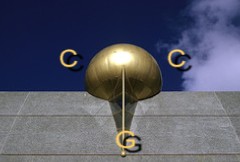‘Space Force,’ ‘Homecoming’ and ‘Ramy’ are among the most promising new streaming series in May....
It’s no secret that we’re all streaming a lot more than usual, as we seek distractions amid weeks of coronavirus-related stay-at-home orders.
So with lockdowns for much of the country unlikely to ease significantly anytime soon, it’s a good thing the rest of this year will bring another strong crop of streaming titles.
But with more than 25 million Americans now out of work, and millions more dealing with pay cuts or facing job uncertainty, having multiple streaming services can seem like a luxury. So it may be time to re-evaluate which services are really worth your money.
As we have previously mentioned, consumers can take full advantage of cord-cutting by capitalizing on the ability to add and drop streaming services each month, and all it takes is good planning and timing. Remember, a billing cycle starts when you sign up, not necessarily at the beginning of each month.
Consumers can also take advantage of deals for free streaming trials, as Disney and Apple in particular focus on building subscriber bases rather than growing revenue (for the time being, at least). You’re never going to get a better deal than free, and the offers won’t last forever.
Free possibilities aside, when it’s time to decide where your subscription dollars should go, What’s Worth Streaming will be here to help. We will rate each major streaming service every month as a “play,” “pause” or “stop,” similar to investment analysts’ ratings of buy, hold and sell, and pick the best content that will help you make your monthly decisions.
Here’s a look at what’s coming to the various streaming services for the rest of 2020, and what’s really worth the monthly subscription fee.
Netflix ($8.99 or $12.99 a month)
Netflix Inc. NFLX, -1.09% is rolling out the big names in May, with a new sitcom starring Steve Carell and a pair of new drama series from TV hitmaker Ryan Murphy and Oscar-winning director Damien Chazelle. Carell’s “Space Force” (May 29) sounds the most promising, though there’s no trailer yet. He’ll play a decorated general who dreams of running the Air Force, but instead gets put in charge of creating the new Space Force — which President Donald Trump has launched in real life — and getting American boots back on the moon ASAP. There’s a lot of potential for a “Veep”-type workplace comedy, and the other names attached to the show — Lisa Kudrow as the wife of Carell’s character, as well as John Malkovich, Noah Emmerich, Ben Schwartz and Fred Willard — are highly promising. Another good sign: It’s co-created by Greg Daniels (“The Office,” “Parks and Recreation,” “King of the Hill”), who knows a thing or two about how to make a great sitcom. With all the talent behind this, it should be a must-see.
On the drama side, Murphy’s limited series “Hollywood” (May 1) will focus on a group of aspiring actors and filmmakers trying to make it big in the 1940s movie biz. Murphy-series regulars Darren Criss (“Glee,” “The Assassination of Gianni Versace”), Dylan McDermott (“American Horror Story’) and Broadway icon Patti LuPone star in a glitzy, technicolor extravaganza, featuring an alternate history of Hollywood as told by outsiders to the traditional system. Like all things Ryan Murphy, it looks slickly stylized and over-the-top, and again like all things Ryan Murphy, it’ll be right up some people’s alley and not at all for others. Your reaction to the trailer should answer that question pretty quick.
A trio of European dramas will also bear noting: “The Eddy,” from “La La Land” director Chazelle, Season 3 of the Nordic noir “Bordertown” and the crime thriller “White Lines.” Set in modern-day Paris, “The Eddy” (May 8) stars André Holland (“Moonlight”) as the owner of a jazz club who gets caught up with criminals in an effort to save his struggling business. As a bonus, the club’s house band is made up of real Parisian jazz musicians, and a soundtrack album will accompany the series’ launch. A little farther north, “Bordertown” (May 11) returns for a third season, as a gifted but troubled police detective tangles with worse crimes than he ever imagined he’d encounter in a sleepy Finnish city near the border with Russia. While technically well done and beautifully shot (the Finnish scenery is gorgeous), the intense violence and unrelenting bleakness will scare away some viewers. There’s also “White Lines” (May 15), a British mystery set in Ibiza from the creator of “Money Heist.” A woman (Laura Haddock) comes to the resort island to investigate her DJ brother’s disappearance -— raves, drugs and murder ensue. This could be a fun, binge-worthy thrill ride.
Among movies, there’s the streaming debut of Adam Sandler’s critically acclaimed, tense crime drama “Uncut Gems” (May 25), and “The Lovebirds” (May 22) an action-packed rom-com starring Kumail Nanjiani and Issa Rae as a couple who get caught up in a murder mystery. It was supposed to be released in theaters in April, but switched to a Netflix release due to the pandemic. Nanjiani and Rae are hugely likable actors and the movie looks like a fine enough romp.
Christina Applegate and Linda Cardellini return for Season 2 of the dark comedy“Dead to Me” (May 8), Ellie Kemper is back for an “Unbreakable Kimmy Schmidt”interactive special (May 12), and there are also a few high-profile standup comedy specials, from Jerry Seinfeld (May 5), Patton Oswalt (May 19) and Hannah Gasdsby (May 26) — whose last special, the stunning and eye-opening “Nanette” in 2018, was perhaps the must-see show of that year.
Play, pause or stop? Play. Netflix is still the clear No. 1 in the streaming wars, and May will only bring more binge-worthy content to its incredibly deep library.
Amazon Prime Video ($12.99 a month)
Greg Daniels is a busy guy, and as his “Space Force” debuts on Netflix, he’ll also have a new sitcom launching on Amazon.com Inc.’s AMZN, -7.59% Prime Video. That would be “Upload” (May 1), a sci-fi comedy that looks like a blend of “The Good Place”and the “San Junipero” episode of “Black Mirror,” taking place in a future where consciousness is uploaded to a digital afterlife, and a newly uploaded (aka dead) guy has to adapt to his new “life” while helping solve a mystery back down on Earth. Early reviews are middling, but it may be worth a view.
Amazon’s most promising May show is the return of “Homecoming” (May 22), which in its second season swaps out its star (Janelle Monae replaces Julia Roberts) and its director (Kyle Patrick Alvaraz takes over from Sam Esmail). The loss of Esmail, who gave Season 1 a stylish, Hitchcockian look, is concerning, but the trailer at least looks intriguing. Monae’s character wakes up on a boat in the middle of a lake, and has to unravel who she is and what happened to her, with the shady Geist Group and its secretive pharmaceuticals at the center of the mystery once again. The first season of “Homecoming” may have been Amazon’s single best series to date, and if Season 2 can even approach that, viewers should be very pleased.
There’s also a crop of movies, including the Elton John biopic “Rocketman” (May 22); the fun indie sci-fi thriller“The Vast of Night” (May 29), which has won acclaim at various film festivals; Kristen Stewart in “Seberg” (May 15), a biopic thriller about the FBI’s surveillance of French new-wave actress Jean Seberg; and nearly 40 independent films and shorts that would have played at this year’s SXSW Film Festival. Amazon is hosting a mini SXSW in the wake of that film fest’s cancellation due to the coronavirus, with selections streaming for free (no Prime Video paywall) from April 27 to May 6.
Play, pause or stop? Play. “Homecoming” alone could be worth the price, and there’s juuust enough other promising new stuff to make Prime Video worth your while in May.
Hulu ($5.99 a month or $11.99 with no ads)
The true value in Hulu is its vast library and extensive lineup of new shows (usually airing the day after broadcast), so consider the few original series on tap for May a bonus.
Ramy Youssef won a Golden Globe award for his portrayal of an Egyptian-American slacker in the unique coming-of-age comedy “Ramy,” and the semi-autobiographical series returns for a second season on May 29, with Oscar-winner Mahershala Ali in a new guest role. It’s a hilarious and empathetic story about a young Muslim-American balancing his faith with his typically American lifestyle. “Ramy” is one of Hulu’s very best series, and worth checking out.
Weirdness abounds in Hulu’s other two big May debuts, the animated “Solar Opposites” and the historical comedy “The Great.” Justin Roiland and Mike McMahon, part of the creative team behind the spectacularly strange animated hit “Rick and Morty,” are the brains behind “Solar Opposites” (May 8), a sitcom about an alien family forced to take refuge on a galactic backwater planet called Earth. Originally created for Fox, Hulu has already green-lit two seasons. Even weirder is “The Great” (May 15), which mashes up a historical costume drama about the rise of Catherine the Great with satirical comedy. Elle Fanning stars as Catherine, with Nicholas Hoult as her husband, the emperor Peter III of Russia. The super-quirky tone and willingness to veer from actual history seem to put it along the lines of Apple TV+’s “Dickinson.” One positive sign — “The Great’s” showrunner is Oscar-nominated writer Tony McNamara, who penned another quirky historical comedy that turned out quite well: 2018’s “The Favourite.”
Play, pause or stop? Play. Even though there’s nothing essential until “Ramy” at the end of the month, Hulu’s overall lineup makes it the best value in streaming.
HBO Max ($14.99 a month)
Time to welcome HBO Max to the streaming wars. The long-anticipated service from AT&T Inc.’s T, -1.87% WarnerMedia launches May 27, offering HBO content as well as Warner Bros. movies and TV series from Warner cable networks such as TBS, TNT and Cartoon Network. The service originally planned to have 31 original series launch this year, but that may be in jeopardy due to the coronavirus-related shutdown of TV productions. At launch, its originals lineup with be sparse and unimpressive — “Love Life,” a romantic-comedy anthology starring Anna Kendrick, is the most prominent, along with the controversial Russell Simmons documentary “On the Record”; “Legendary,”a voguing competition series; the kids competition show “Craftopia”; and new offerings from Looney Tunes and Sesame Street’s Elmo. And of course, the much-ballyhooed “Friends” reunion, which was meant to debut with the service, has been postponed.
What HBO Max will have, besides HBO’s vast and excellent library (“The Sopranos,” “The Wire,” “Game of Thrones,” “Veep,” “Watchmen,” etc.), is every season of “Friends,” “The Big Bang Theory” and “South Park,” among others.
Play, pause or stop? Stop. For one reason only: Since this column focuses on month-to-month subscriptions, and since it launches so late in the month, ignore HBO Max for May and just start a subscription in June. Yes, it’s the most expensive streaming service, but it will be worth the price for the HBO content alone. Literally, since HBO Now is the same price — all the Warner content is just icing on the cake.
CBS All Access ($5.99 a month or $9.99 with no ads)
ViacomCBS Inc.’s VIAC, -4.63% CBS All Access is still offering a 30-day free trial if you sign up before May 10, and its best show — “The Good Fight” — is in the middle of its current season. So there’s a case to be made to start an account and binge the season during the free trial (only eight of the 10 episodes were completed before the pandemic shut down production) and then cancel your account. You just need to time it right. Because aside from that, there’s nothing of note coming in May, and very little reason to pay for a subscription.
Play, pause or stop? Stop. Still not enough content to justify the cost.
Apple TV+ ($4.99 a month)
Apple’s AAPL, -1.61% TV+ is still looking for its first true hit show. Don’t expect that to change in May.
The service will have two new offerings: “Trying” (May 1), a British comedy about a couple who want to start a family but can’t conceive, and “Central Park” (May 29), an animated musical comedy from the co-creator of “Bob’s Burgers.” “Central Park” seems the better bet, as anyone who’s ever enjoyed one of “Bob’s Burgers” musical numbers can attest to. The voice casting is solid (Josh Gad, Leslie Odom Jr., Kristen Bell, among others) and if it has even a fraction of the heart and humor of “Bob’s Burgers,” it’ll be a welcome addition.
Play, pause or stop? Stop. Not enough quality offerings to justify the price. Still, if you’ve bought a new iPhone and have a free trial, it’s worth a look.
Disney+ ($6.99 a month)
Six months in and “The Mandalorian” has still been the only big hit for Walt Disney Co.’s DIS, -2.45% streaming service, so to fill the void between Seasons 1 and 2 (still scheduled to debut this winter), Disney+ is launching “Disney Gallery: The Mandalorian” (May 4, new episodes every Friday after that), an eight-episode behind-the-scenes docu-series about how the show was made. Does anyone really need that? Not really. Will “Star Wars” fans still watch it? Oh yeah.
May 4 is, of course, Star Wars Day (May the Fourth be with you), and Disney+ is fully capitalizing, also releasing the final instalment of the latest trilogy, “Star Wars: The Rise of Skywalker,” as well as the series finale of the animated “Star Wars: Clone Wars.”
There should be a big development for “Simpsons” nerds too. Disney has said that all early seasons of “The Simpsons” will finally be available in their original screen-aspect ratio by the end of May, at 4:3 instead of 16:9 — up until now, old episodes have been cropped to fit widescreen TVs, cutting out some visual jokes. Will most people notice? Probably not. But for the hard-core fans, this is a big improvement.
There’s not a lot besides that. Another behind-the-scenes docu-series, “Prop Culture” launches May 1, and there are a handful of additions to Disney’s movie library, such as “The Fantastic Mr. Fox” (May 22) and “Maleficent: Mistress of Evil” (May 15), but nothing else of note.
Play, pause or stop? Pause. If you have kids who watch Disney shows and movies endlessly on repeat, then sure, it’s worth it. But if you’re not a kid or a “Star Wars” superfan, there’s not a lot of variety there.
Quibi ($4.99 a month or $7.99 a month with no ads)
Quibi launched less than a month ago, and it’s already changing its basic viewing model. Instead of being available only on mobile devices, as originally intended, the service in May will allow some users to cast its videos from their phones to their TVs. That’s likely because with stay-at-home orders, people are not on the go as much and don’t really have a need for 10-minute-or-less video hits when they have hours upon hours to kill.
And while most Quibi content isn’t quite ready for prime time, May will bring the debut of perhaps its most high-profile show, the “Reno 911” revival. The hilarious “Cops” spoof had a cult following for years on Comedy Central, and the original cast is back for a new season May 4.
Still, as a video service, Quibi is more akin to YouTube or TikTok than a true Netflix competitor, and its cost (even with a free trial period) far exceeds its quality.
Play, pause or stop? Stop. You can better spend your money elsewhere.
Peacock (Free for Comcast subscribers only, for now)
Peacock launched for free for some Comcast Corp. CMCSA, -1.72% cable subscribers in April, but won’t be available to the general public until July. It’s got a solid library of NBCUniversal shows, such as “30 Rock,” “Parks and Recreation” and “Law & Order,” but apparently the original series will be on hold until the July launch. We’ll revisit in a couple of months.
Source: MarketWatch
#Streaming #Netflix #Hulu #Disney #Amazon #Prime Video #You Tube #HBO #Max #Tubi #Peacock
#Streaming #Netflix #Hulu #Disney #Amazon #Prime Video #You Tube #HBO #Max #Tubi #Peacock























